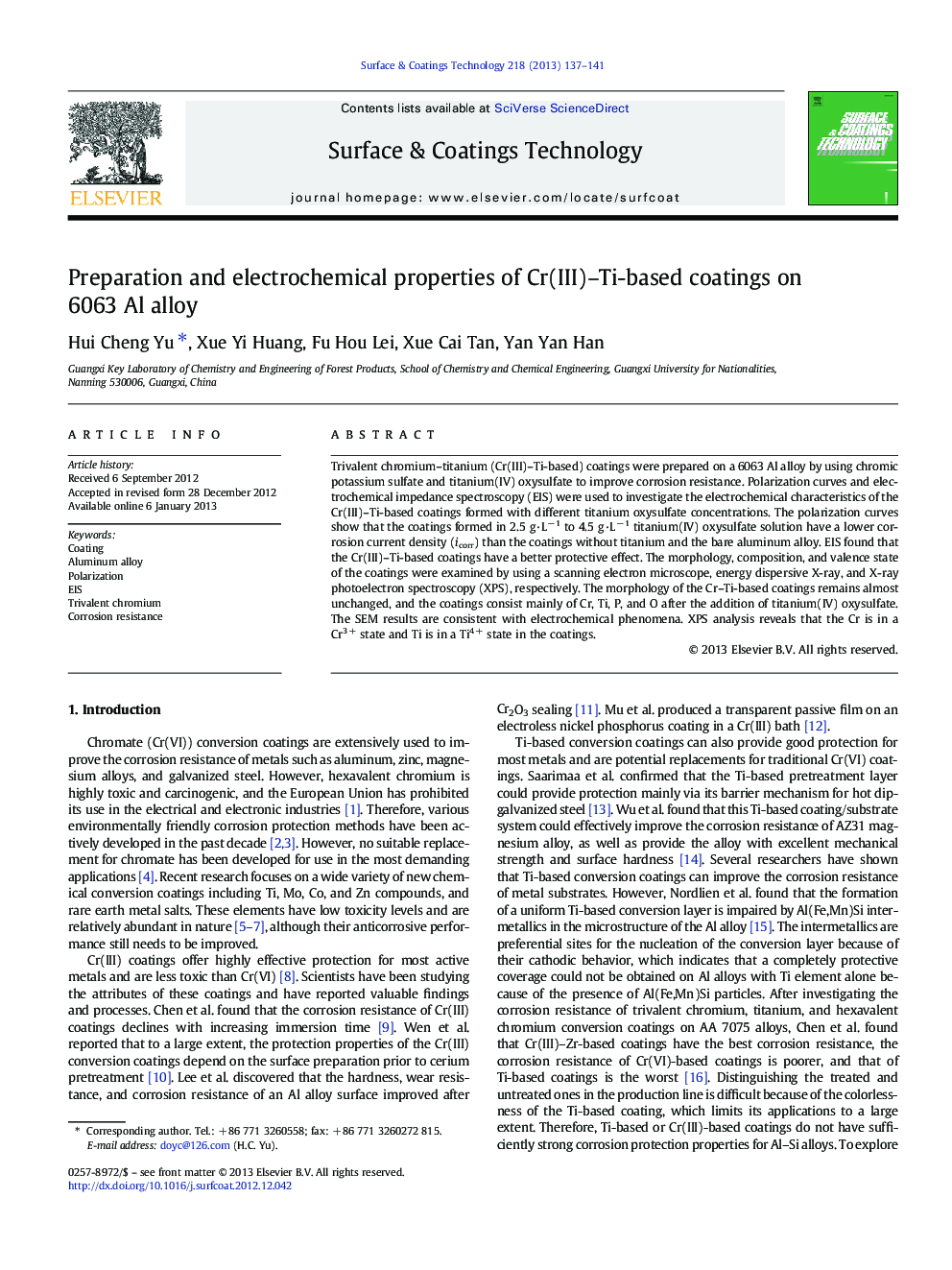| Article ID | Journal | Published Year | Pages | File Type |
|---|---|---|---|---|
| 1658181 | Surface and Coatings Technology | 2013 | 5 Pages |
Trivalent chromium–titanium (Cr(III)–Ti-based) coatings were prepared on a 6063 Al alloy by using chromic potassium sulfate and titanium(IV) oxysulfate to improve corrosion resistance. Polarization curves and electrochemical impedance spectroscopy (EIS) were used to investigate the electrochemical characteristics of the Cr(III)–Ti-based coatings formed with different titanium oxysulfate concentrations. The polarization curves show that the coatings formed in 2.5 g·L− 1 to 4.5 g·L− 1 titanium(IV) oxysulfate solution have a lower corrosion current density (icorr) than the coatings without titanium and the bare aluminum alloy. EIS found that the Cr(III)–Ti-based coatings have a better protective effect. The morphology, composition, and valence state of the coatings were examined by using a scanning electron microscope, energy dispersive X-ray, and X-ray photoelectron spectroscopy (XPS), respectively. The morphology of the Cr–Ti-based coatings remains almost unchanged, and the coatings consist mainly of Cr, Ti, P, and O after the addition of titanium(IV) oxysulfate. The SEM results are consistent with electrochemical phenomena. XPS analysis reveals that the Cr is in a Cr3 + state and Ti is in a Ti4 + state in the coatings.
► Cr(III)–Ti-based coatings were prepared on a 6063 Al alloy. ► Ti was incorporated into the Cr(III) coatings. ► The anticorrosion properties were enhanced by Cr(III)–Ti-based coatings. ► No significant effect on the morphology of the coatings was found. ► The Cr element in the coatings is in a Cr3 + state whereas Ti is in a Ti4 + state.
